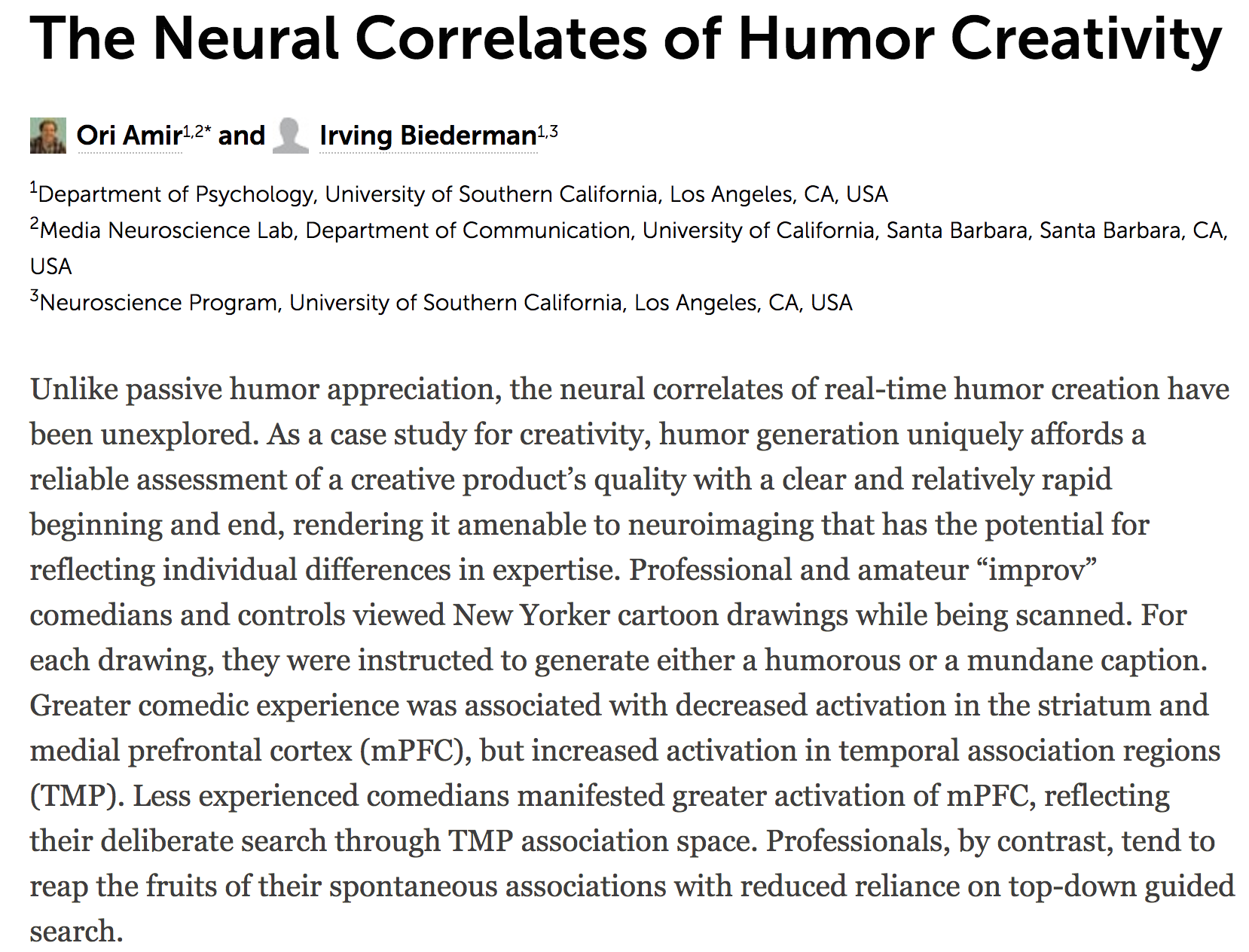How can creativity be practiced?

I stumbled across this somewhat interesting paper1 recently on Twitter and it reminded me about something I wrote in a previous blog post. I noted that writing these posts has this “cognitive” effect where (for a short period of time, i.e. several days) my mind starts automatically processing information without me thinking too much about it. On a normal day, my thought process (in a loose sense) resembles that of the “less experienced comedian”: sequential and deliberate. If I want to analyze or form an opinion about something, I have to deliberately think about it. Only when I write pieces where I try making these complex associations between varied topics does my mind reach a state that resembles “automatic association”.
It’s a shame that what I’d call my normal work doesn’t do that for me. Large portions of my day are spent reading papers and prototyping ideas that I have. I sometimes organize summaries of my research work and ideas into slides but that in itself doesn’t stimulate creativity. Perhaps that’s okay? Maybe my normal “condition” is due to years of me thinking slowly and deliberately, without the occasional creative bursts to shake things up. In fact, maybe the best approach is to repeatedly alternate between the work style of thinking and creative freeform thinking.
One way that I would define creativity is the ability to easily and naturally draw connections between existing topics, often synthesizing something new. Following that definition, this is the first time that I’ve been semi-convinced that creativity can be practiced. In the past year, I’ve found that while reading got me thinking, the ratio of tiring to stimulating seemed to be just under one. Perhaps I should instead be approaching reading as a way to acquire material for further thoughts and analysis. Writing a think piece or a story brings it all together, allowing me to create something new and change how I see the world around me.